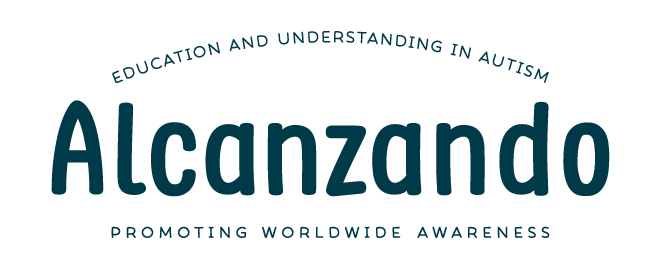
08 Jul Autism and Asperger Today – Autismo y Asperger Hoy
A topic that many families bring up during consultation sessions and that leads me to make some clarifications is the use and differences between Asperger and Autism.
Asperger became a diagnosis in 1992, when it was included in the tenth published edition of the Diagnostic Manual of the World Health Organization, International Classification of Diseases (ICD-10)
In 1994, Asperger was added to the diagnostic and statistical manual of mental disorders, 4th edition (DSM-IV) published by the American Psychiatric Association (APA) as a condition for which the main diagnostic criteria included a “Qualitative deterioration in social interaction and patterns of behavior, interests and restricted, repetitive and stereotyped activities,”
In both manuals, Asperger, together with Autism, were listed as a sub-category of Generalized Developmental Disorders (TGD)
In 2013, the DSM-V was published, a publication that marks an important change in the conceptualization of autism. Of a categorical multi-diagnostic system to a single diagnosis based on multiple dimensions. Generalized developmental disorders are replaced by Autism Spectrum, a diagnosis under which both Autism and Asperger are now included.
Similarly, in January 2022, the 11th version of the ICD (ICD-11) is published in which the modification to Autistic Spectrum Disorder is made, a diagnosis under which both, Child Autism and Asperger’s Syndrome are included. The ICD-11 places them in a single category characterized by social communication deficits and behavioral patterns, interest or restricted, repetitive and inflexible activities.
Summarizing some of the main changes are
1.- In the DSM-V, the terms “Autistic Disorder”, “Asperger Syndrome” and “Disintegrative Disorders of Childhood” have been replaced by “Autistic Spectrum Disorder”.
2.- All people who were diagnosed under the guidelines of the DSM-IV, maintain their diagnosis. No one “lost” his diagnosis due to the changes published in the DSM-V.
3.- The DSM-V mentions “multidimensional elements”, that is to say that each person has difficulties in certain areas and that a personalized evaluation will be needed to identify the amount of support that each individual needs in the various areas of concern.
Conclusions:
The DSM-V had already considered this change prior to the ICD-11.
Some professionals choose to continue working with the DSM-IV and/or the ICD-10, and therefore use the diagnosis of Asperger if the person evaluated meets the diagnostic criteria listed in these editions. Other professionals and organizations , as in our case, use the most recent versions, the DSM-V or the ICD-11, with the updates indicated and, if appropriate, using Autism Spectrum Disorder.
***********************************************************
Un tema que muchas familias consultan y me lleva a hacer algunas aclaraciones con el fin de entender ambos términos: Asperger y Autismo.
Asperger se convirtió en un diagnóstico en 1992, cuando se incluyó en la décima edición publicada del Manual de diagnóstico de la Organización Mundial de la Salud, Clasificación Internacional de Enfermedades (ICD-10 por sus siglas en inglés).
En 1994 se agrega Asperger al Manual Diagnóstico y Estadístico de los Trastornos Mentales, 4ta Edición (DSM-IV por sus siglas en inglés) publicado por la Asociación Americana de Psiquiatría (APA) como una condición para la cual los principales criterios de diagnóstico incluían un “deterioro cualitativo en la interacción social y patrones de comportamiento, intereses y actividades restringidos, repetitivos y estereotipados,” y cuando estas dificultades causaban “un deterioro clínicamente significativo en el funcionamiento social, ocupacional u otras áreas importantes”.
En ambos manuales, Asperger, junto con Autismo eran listado como una sub-categoría de Trastornos Generalizados del Desarrollo (TGD)
En el 2013, se publica el DSM-V, publicación que marca un cambio importante en la conceptualización del Autismo, de un sistema de diagnóstico multi categorial a un diagnóstico único basado en múltiples dimensiones. Trastornos Generalizados del Desarrollo es reemplazado por Espectro del Autismo, diagnóstico bajo el cual son incluidos Autismo y Asperger.
De manera similar, en enero del 2022, se publica la 11va versión del ICD (ICD-11) en la cual se hace la modificación a Trastorno del Espectro Autista, diagnóstico bajo el cual se incluyen tanto el Autismo Infantil como el síndrome de Asperger, en una sola categoría, caracterizada por déficits de comunicación social y patrones de comportamiento, intereses o actividades restringidos, repetitivos e inflexibles.
Algunos de los principales cambios:
1.- En el DSM-V, los términos “Trastorno Autista”, “Síndrome de Asperger» y «Trastorno Desintegrativo de la Infancia” han sido sustituidos por “Trastorno del Espectro Autista“.
2.- Todas las personas quienes fueron diagnosticadas bajo las guías del DSM-IV, mantienen su diagnóstico. Nadie “perdió” su diagnóstico debido a los cambios publicados en el DSM-V.
3.- El DSM-V menciona “elementos multidimensionales“, es decir que cada persona tiene dificultades en determinadas áreas y que una evaluación personalizada será necesaria para identificar la cantidad de apoyo que necesita cada individuo en las diversas áreas de preocupación.
Conclusiones:
El DSM-V ya había considerado este cambio con anterioridad al ICD-11.
Algunos profesionales optan por seguir trabajando con el DSM-IV y/o el ICD- 10 y por ello utilizan el diagnóstico de Asperger si la persona evaluada cumple con el criterio diagnóstico listado en dichas ediciones. Otros profesionales, como es mi caso, utilizan las versiones más recientes, el DSM-V o el ICD-11, con las actualizaciones señaladas y, de ser apropiado, utilizamos el diagnóstico Espectro del Autismo.

Sorry, the comment form is closed at this time.